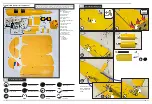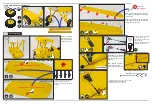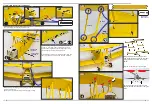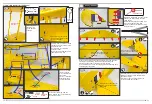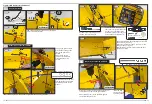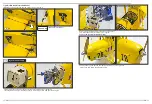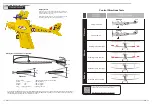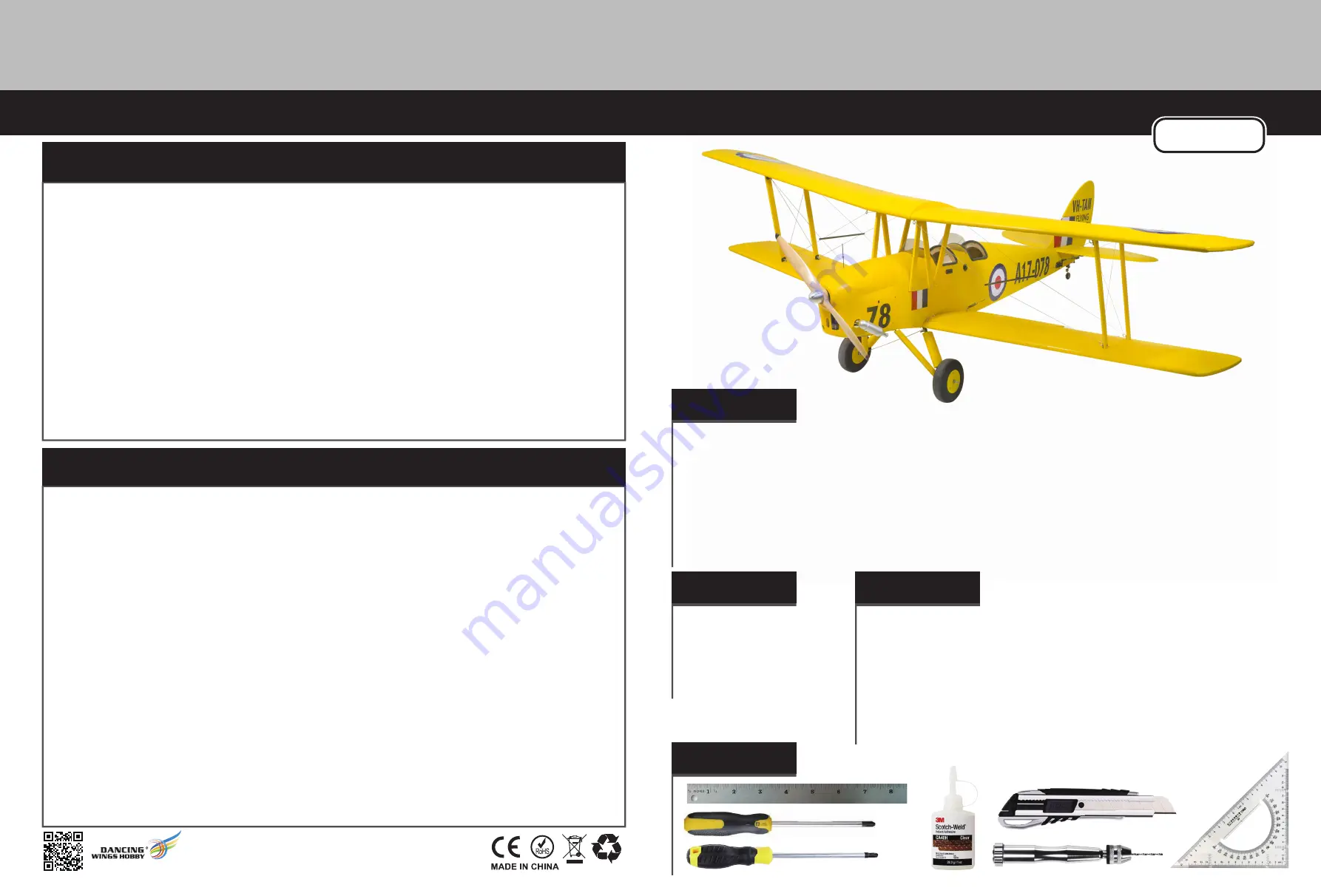
Balsawood Scale Airplane
●
This product should not be considered a toy, but rather a complicated and sophisticated flying model. Your safety depends
on how you use and fly it, If not correctly operated, could cause injury to you or your family members. Children must be
accompanied by an adult at all times if operating this product. Not suitable for children under the age of 14. THIS IS NOT A
TOY.
●
Do not fly around some restricted location like airports, military bases, residential areas, etc.
●
You will need to range check the transmitter to be sure you are not experiencing any interference.
●
Always turn on the receiver last after turning on the transmitter and shut off the receiver first before turning off the transmitter.
●
If you are only a beginner to the radio control model flying, do not attempt to fly your model without any assistance or advice from
advanced expert fliers.
●
Keep relevant items out of reach of children.
●
This product has been flight tested to meet or exceed our rigid performance and reliability standards in normal use,if you plan to perform
any high-stress flying, you are solely responsible for taking any and all necessary steps to control movement range and reinforce the body
strength.
●
This product may include some fiberglass and carbon-fiber reinforced plastic parts,which may cause eye and skin discomfort,pls wear the
goggles or dust-proof clothes when needed.
●
Due to air traffic safety control, the products you receive may not have the glue that appears in the list. Please understand and purchase the
glue you need at your local stationery store.
SAFETY PRECAUTIONS
●
Check/adjust servo centering, in order to adjust the control surface better.
●
Double-check the spinning direction of motor at first usage, and sure it’s suitable for your model.
●
Set the center of gravity (CG) at the position that manual already marked out. If necessary, add weight to the nose or tail
to ensure the best flight performance.
●
Double-check the inside of the fuselage, make sure all the equipments are correctly connected; Check the heat-shrink
covering material’s surface, Make certain all screws, bolts, cabin and canopy remain secure.
●
Take great care when connecting/disconnecting the battery, pls replace the battery immediately once found low voltage
or damage to battery.
●
The way the internal devices of the fuselage are connected will be related to your transmitter-receiver device. For those
transmitter-receiver devices with more functions, you can simplify the connection of the internal devices of the fuselage.
Check your device for details to see if it meets the features you need.
●
When the power system and transmitter-receiver device are paired for the first time, you may need to set the maximum
stroke of the throttle. Please set it yourself.
PRE-FLIGHT CHECKS
http://www.dwhobby.com/
SCG29
Tools Needed
Specification
Wingspan:2150mm (85inch)
Fuselage Length:1920mm (75inch)
Fly weight:≈8KG (About 280pound)
Historical Background
Suggested Equipment
2-stroke DLE/RCGF 35CC
4-stroke NGH GF38
20*8 inch
Motor :ECO5330CKV 205KV
BATT :37V 10S LIPO
ESC : 100A
Prop : 20.5*12WE
Servo: 37g*6pcs
Y wire 1pcs
30cm extended wire 4pcs
Electric motor:
Oil engine:
The de Havilland DH.82 Tiger Moth is a 1930s British biplane designed by Geoffrey de Havilland and built by the de
Havilland Aircraft Company. It was operated by the Royal Air Force (RAF) and many other operators as a primary trainer
aircraft. In addition to the type's principal use for ab-initio training, the Second World War saw RAF Tiger Moths operating
in other capacities, including maritime surveillance and defensive anti-invasion preparations; some aircraft were even
outfitted to function as armed light bombers.
From the outset the Tiger Moth proved to be an ideal trainer, simple and cheap to own and maintain, although control
movements required a positive and sure hand as there was a slowness to control inputs. Some instructors preferred these
flight characteristics because of the effect of "weeding out" the inept student pilot.


